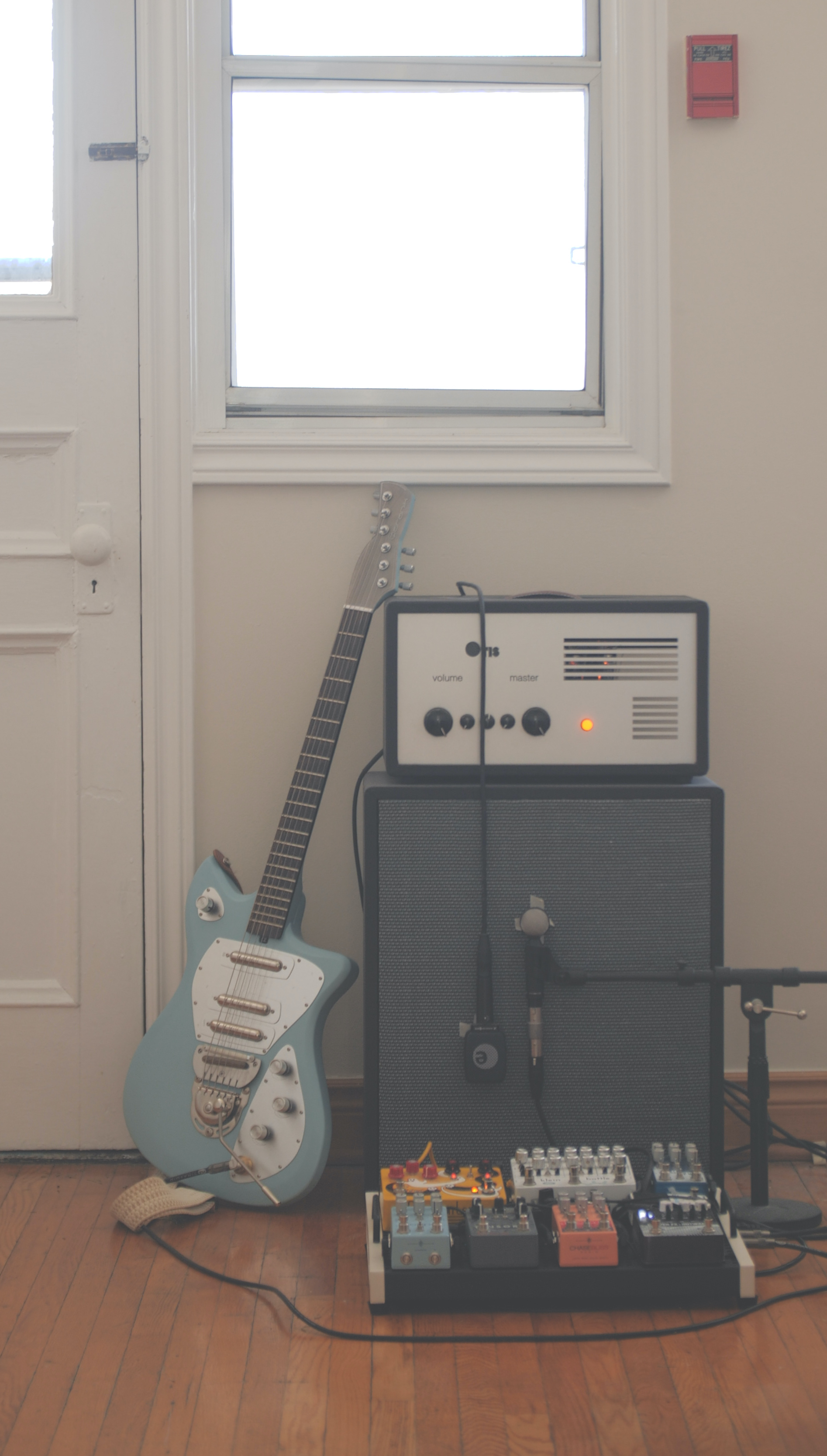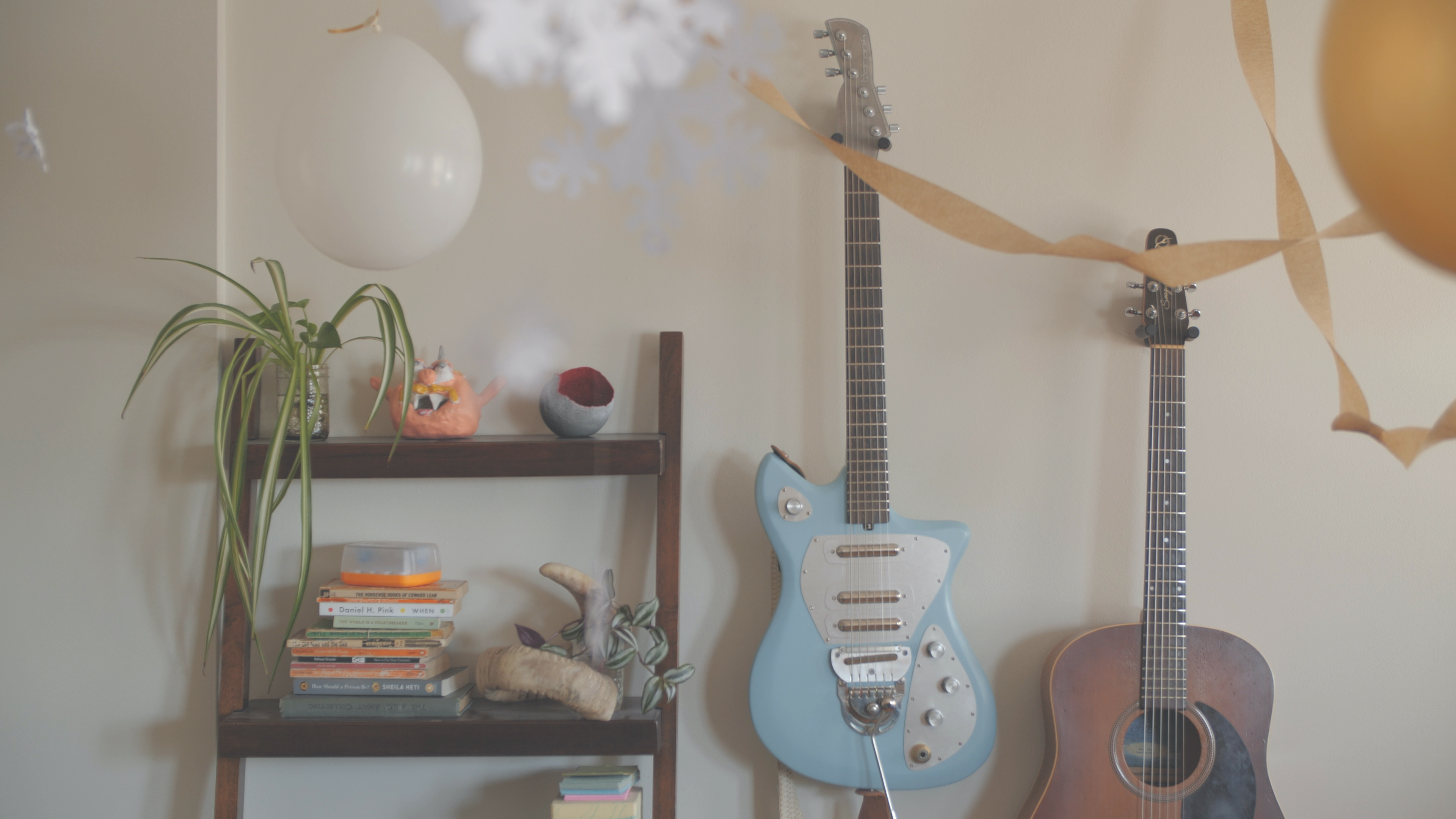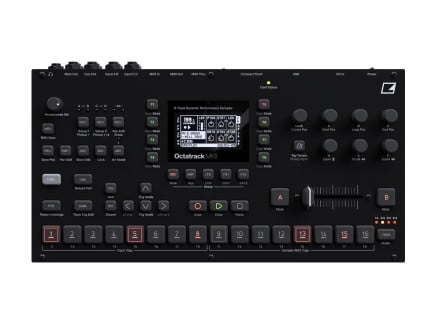Among the many YouTube channels centered around music gear demonstrations, the approach of one youtuber stands out in particular. Whimsical by nature, Knobs' videos tend to focus on the aspects of equipment that many truly care about, such as character, interface, possibilities for integration with other gear—all presented in a focused and entertaining manner. Somehow, Knobs aka Scott Harper always manages to unfurl the essence of the given piece of gear, and showcase it in an uncommonly musical and relatable fashion.
Already widely known for his guitar pedal videos, Scott ventured into the world of modular synthesis over 2 years ago with the same playful and creative approach. Fascinated by his beautifully crafted videos, we've decided to partner up for one of our contests, and asked him to design a unique modular synth for a giveaway. The result is a highly compact, and immensely powerful modular sampler/processor that would likely satisfy both beginner modular enthusiasts and seasoned patchers. To get a better perspective into Scott's process, we did a little Q/A with him covering everything from how he started his YouTube channel to involvement with Chase Bliss Audio, and of course getting into modular synthesizers.

The Origin Story
Perfect Circuit: Hi Scott. Thank you for taking the time to talk to us. Can you tell us about your musical background? How did you get started making music, and how did that lead to your passion for effect pedals?
Scott Harper: Music started as a bit of a refuge from delinquent behaviour when I was in high school. I found myself getting into some uncomfortable situations so I started making music instead of going out. Sampling mostly, piecing together patterns. I didn’t like guitar at first, the music I enjoyed just didn’t have guitars in it. I think the only reason I stuck with it is because it’s such a popular instrument and there was always one around.
I really got into pedals while living in Japan, I just happened to know some people who were really into them and doing some remarkable things. I can’t recall the details now but it left an impression on me, I wasn’t much of a musician at the time.
PC: Your videos are known for their unique aesthetic style and flow. Aside from your YouTube channel, do you have a background in design or video production? What was the impetus for the knobs YouTube channel, and how has your approach to gear demos evolved overtime?
SH: The video stuff is self-taught, but I did have help in the beginning from a couple friends. Chetan Tilokani and Marc Perri. The idea for Knobs had been bubbling in my head for years, a genre-less, ego-less demo channel that was really focused on the object and not the musician.
I really like editing, it’s abstract puzzle-building. It’s satisfying. Fitting the pieces together in a way that clicks, that has the right pace. I found the bridge between audio editing and video editing really natural. Video just adds another dimension, it actually makes things easier in a lot of ways. It’s more grounded.
My approach has mostly evolved in personal, practical ways. Trying to prevent my eyes from shrivelling up.

Influences and Working With Chase Bliss
PC: Who and what do you consider to be the major influences on your work (musically and otherwise)?
SH: My biggest influences have always been the people I know. Improvisation is the musical ideal to me and that’s definitely something I sponged from friends. I go down rabbit holes with certain musicians but I’ve always had a stubborn attitude towards study and emulation. I try to insulate against it. I think it goes hand-in-hand with the improvisation thing, I’m just really interested in chasing my own instincts. I feel like that’s the best way to offer something personal and real. But I’m definitely a soup of different artists on a subconscious level, can’t be helped.
One thing I do really take from other musicians is the idea of permission. Like, you hear a really odd piece of music and it’s like “okay, I can do that.”
PC: While you've created videos for a lot of different manufacturers, it seems that you've developed a unique partnership with Chase Bliss Audio—the Blooper pedal specifically is known to be a joint effort between you and the brand. How did this partnership come to be, and what was your role in developing the pedal?
SH: It’s always felt natural with Joel & Chase Bliss Audio. I definitely consider Joel a partner, just kind of across the board. Someone I rely on. I almost quit doing Knobs early on, but Joel invited me to go to NAMM with him and I immediately felt at home. Once I got to know the people making pedals it felt like where I wanted to be.
Every year we’ve just done a little bit more work together. Joel let me run with Blooper for the most part and manage the creative direction of the pedal. He would only step in when practical decisions had to be made. At first I was expecting there would be some kind of hand-off, but it just never happened. I learned more making Blooper than I did at school.
PC: Over the years you probably have developed a special bond with some pieces of gear. What are some of your favorites, and what makes them stand out for you?
SH: Octatrack, Organelle, Tracker and Blooper. I also really like this overdrive called Singing Tree by Mellowtone for superficial reasons. I don’t like the way it sounds but the aesthetics get me in a way I’ll never understand. I’ll probably have it cremated with me.
Music stuff is mostly about feel / interface for me. At the end of the day it’s less about the pros and cons of the features and more about whether or not it feels good to use. For example, the Tracker had some heavy aliasing on the samples at first (I think they’ve fixed this), but I would have used it anyway. Because if it feels good I’ll use it more, and feel inspired to go that extra bit further.
They all have their own little niche:
Polyend Tracker = detail work
Critter & Guitari Organelle = song starter
Elektron Octatrack = idea palette
Chase Bliss Blooper = home
Getting Into Modular
PC: While your channel used to be focused primarily on pedals, in the last couple of years you've started making excursions into the realm of synthesizers too, and specifically modular synths. What influenced you initially to explore modular synthesis?
SH: To me it seemed like a really natural next step. I’m always surprised when people are into the strangest pedals but have no interest in modular. It just feels like what’s next. One thing that strikes me about modular is that ‘going further’ is like a core value. Guitar players can be really conversative a lot of the time, like if a pedal is too interesting it’s going to kill rock-n-roll. Most pedals are just slight variations on a theme, but modules are often trying to really do something new, and are applauded for it.
My experience getting into modular is pretty common I think. I got sucked in by the effects because that’s what I understood, thought I would use it with guitar, but it’s become something entirely different.
I love it. There’s an effortlessness that comes with modular. You have to concentrate so much on making the right connections and practical choices that the musical decisions fall to the subconscious. Songs just appear.

PC: Do you find that working with modular synths is somewhat similar to working with effect pedals? Being a guitar player, what do you find to be the most exciting part of working with a Eurorack system over a pedalboard? And as an extension to this question—what is the most challenging part of working with modular synths as a guitarist?
SH: Not similar at all. Kind of opposites. To me the whole purpose of a pedal is restriction. I’m realizing that most musicians practice some form of self-limitation – otherwise nothing gets done. With pedals that limitation is built-in. Even the act of recording with a pedal – how that effect becomes baked-in instead of something you tweak later with plugins.
I’ve never found using guitar with modular to be a very natural process, truthfully. It might just be a side-effect of the gain-staging – having to really bump up the volume on the way in, then bring it down on the way out. It just feels a little precarious and altered, sometimes the noise floor increases, etc. It could just be user error, but there are things like impedance that pedals are specifically designed to handle. It’s hard to know, it just feels off. When I do use guitar with modular I just end up recording it direct because I don’t like sending modular into an amp.
PC: Do you feel that it is possible to create a subjectively perfect Eurorack synth or do you find this format to be closer to a pedalboard in a sense that it is in a state of perpetual flux?
SH: One thing modular teaches you is how hard it is to design an instrument. My first build sucked, and I put a lot of thought into it. I just overlooked all the finer points of useability and interface. But I consider that a good thing, a learning opportunity.
I don’t think any part of a musical setup is ever really finished. It’s more about finding your anchors, and introducing change when you need a spark or bump into the limits of something you use often.
I have noticed that modular feels more and more like a narrowing process for me. I want every piece to feel legitimately special and personal, and I’m slowly accumulating the modules that do that. For example, the MUM M8 by ALM. On paper it’s quite a limited filter, but it always fits with what I’m trying to do. The QuBit Synapse is another – it just suits the way I think.

On Designing the System
PC: Can you tell us about the system you've designed [ed: for our joint promotion]? What was the reasoning behind the modules you've selected?
SH: I really wanted to create a small system that was complete on its own, and truly modular – you could approach it with a different workflow for every day of the week. Technically you could do that with any system, but 62HP just isn’t that much space. A system that size usually suggests a certain signal flow. I wanted a small system that legitimately made sense in a number of different configurations.
I was surprised that it actually worked out. I was sure I would at least have to do some revisions, but sometimes things just come together.
PC: Is this system geared toward any particular kind of music/workflow, or is it more open ended? How does the design of the system suit your own personal musical values?
SH: It’s definitely tailored to sampling and looping. The condenser mic of the Arbhar sampler is very much the primary starting point to me. Gathering up whatever is around you and crafting something from that.
I guess intuition sums up my musical values in a word, and sampling always guarantees that intuition is kind of driving things. You don’t have unlimited options - unlimited notes you can play - you have to just collect what’s around you and use it.

PC: Can you share a couple of tips and/or patches/techniques that can be explored with this system?
SH: 1. The system was designed for sloshing audio back and forth between the various parts. Recording acoustic samples in Arbhar, playing them into the Mimeophon and capturing chance loops, then sending that back to Arbhar, etc. Building up a complete song by continuously transferring audio. Each of the parts is quite versatile and can be repurposed multiple times as things evolve.
2. It’s a fairly basic tip overall, but it’s important in the context of the system: the Make Noise Mimeophon can be used as a Karplus-Strong synth voice. So even though the system is tailored to capturing sound, you have a synthetic element that can be used to get things started or add a layer overtop.
3. The inclusion of a shift register is probably the part I find most exciting. It doesn’t seem like it should make sense, there are other things that would fit more intuitively for abstract music-making. But it allows you to activate a rhythmic side of the case in a very playful way. It’s extremely tactile. It feels very pure and raw.
PC: If you had to name this system what would it be called?
SH: Samploo (pronounced like “shampoo”).
PC: What is the best place to hear your music and follow your work (besides YouTube of course)?
SH: Patreon is the best place to keep up on stuff. I’ve kept it to just one tier of $1 so it’s accessible
I also have a website I don’t update.










